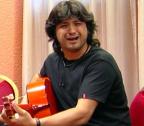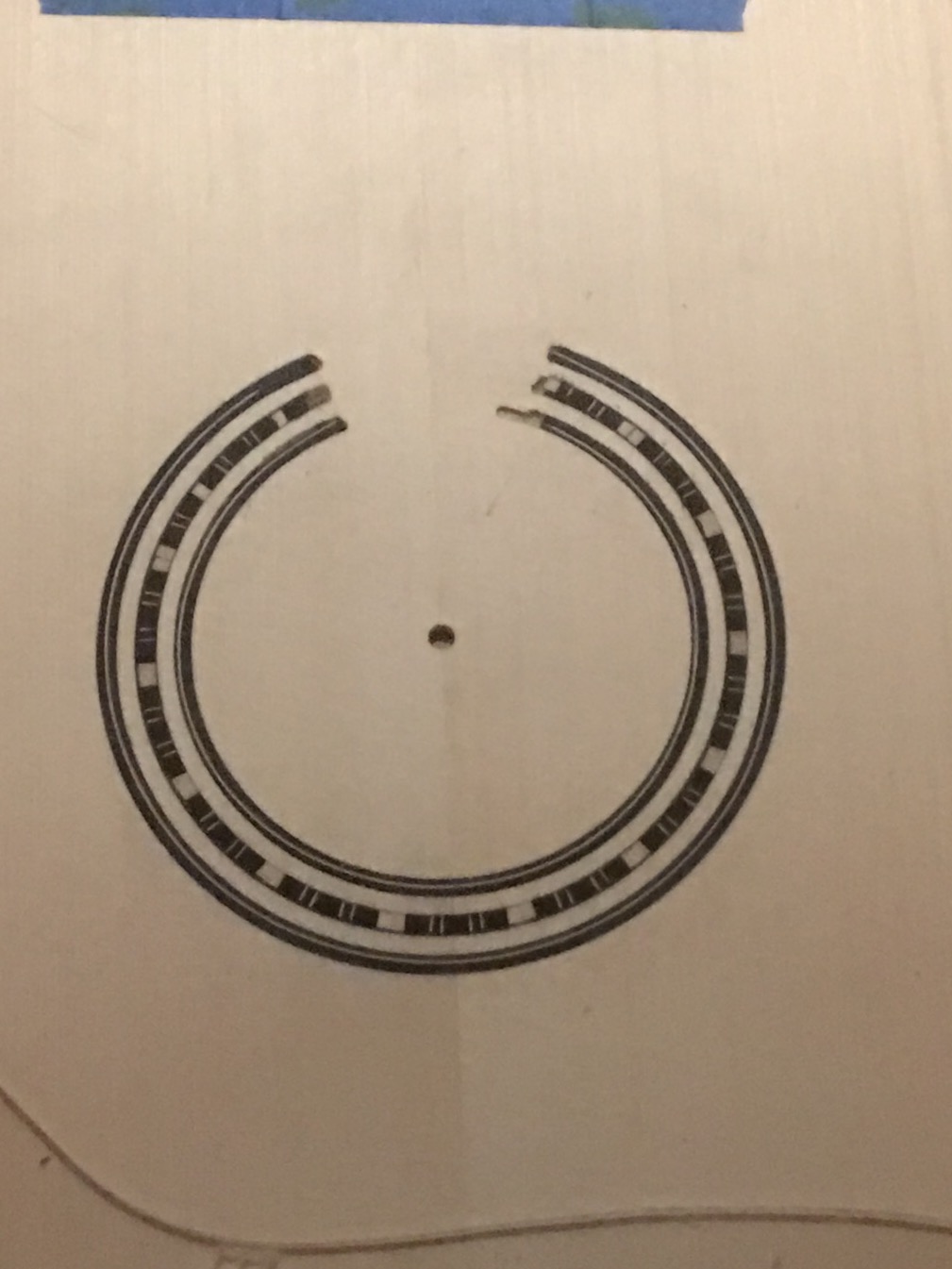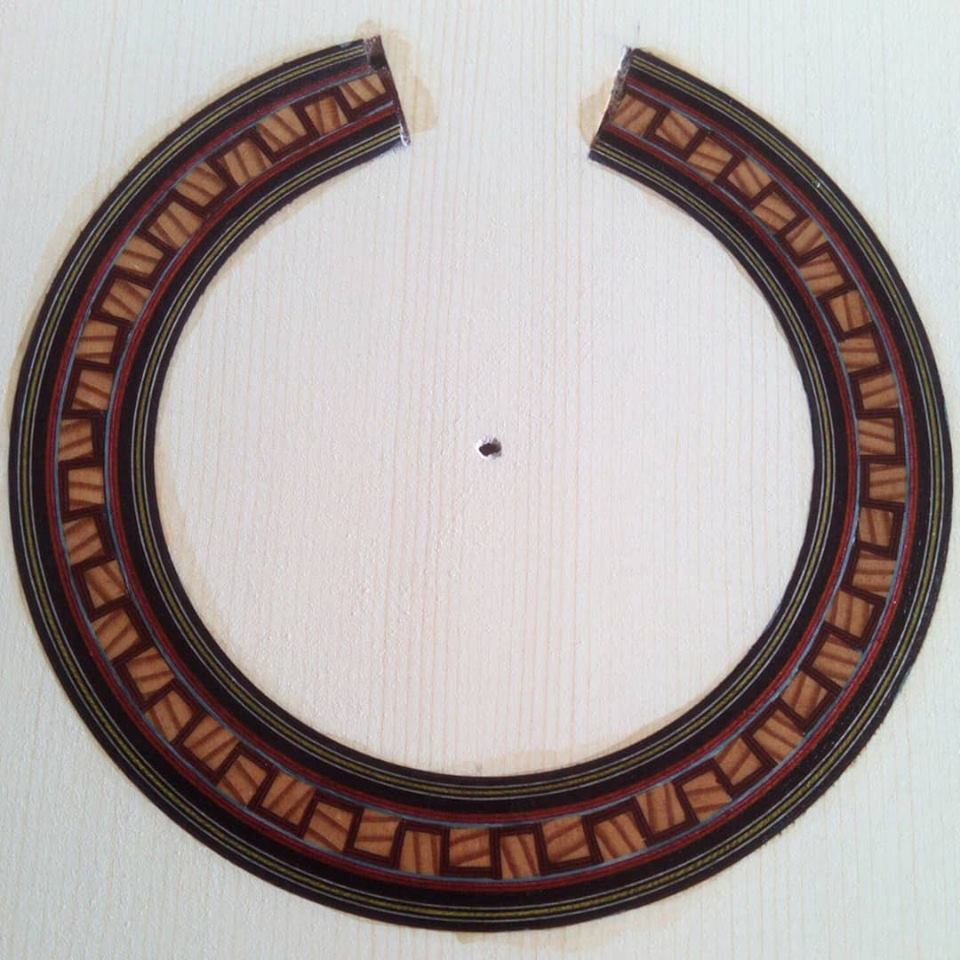Welcome to one of the most active flamenco sites on the Internet. Guests can read most posts but if you want to participate click here to register.
This site is dedicated to the memory of Paco de Lucía, Ron Mitchell, Guy Williams, Linda Elvira, Philip John Lee, Craig Eros, Ben Woods, David Serva and Tom Blackshear who went ahead of us.
We receive 12,200 visitors a month from 200 countries and 1.7 million page impressions a year. To advertise on this site please contact us.
|

|
|
Question About bridge torque and dome
|
You are logged in as Guest
|
|
Users viewing this topic: none
|
|
Login  | |
|

   
estebanana
Posts: 9351
Joined: Oct. 16 2009

|
 RE: Question About bridge torque and... (in reply to JasonM) RE: Question About bridge torque and... (in reply to JasonM)
|
|
|
Jason, there's no formula.
The bridge gets rocked toward the nut lowering the string a tiny bit. How much? Each top is different because the bracing and thickness are different and the inherent stiffness along the grain.
The bridge also often takes time to rock forward, it can happen in 15 minutes, 40 days or 15 months....each one is different.
One thing you can do is arch your lower transverse brace and little bit, this sets up an adjunct structure to the arch in the form of a rigid curved beam. It helps stiffen the area between the sound hole and bridge. You also have to watch the strength of braces and top thickness between soundhole and bridge.
But there's always a trade off, some of the bridge rocking forward is good for flamenco guitars and can be seen on a lot of guitars. Some makers build the rocking motion out of the system by brace and top thickness and others allow it to happen in varying degrees. You just have to decide which style you want to build and how much forward rocking you're willing to allow to the bridge.
If it were me, and this is how I figured this out, I made my first guitars heavier than they needed to be and progressively made them lighter. In the beginning I would error on the heavier side and bit more robust and then go lighter over time.
But if I were you I would not worry too much about this, because you can plane the finger board to make your set up in the pocket, and then if you have a healthy break angle and potential to adjust saddle, you fix any rocking by set up. Just observe what happens on your guitar and make note of it. Then look at the guitar over time to see if anything changed.
---------------------------------------------
If you can look at a lot of nice flamenco guitars or when ever you see a good one, make an accurate wood straight edge or use a metal straight edge. ( wood is more polite if looking at someone else's guitar) Put the straight edge on the top behind the bridge and check the arch of the top. If the strings are on you can pull a thread under the strings and then pull it it taut a few mm's over the top to see the arch in front of the bridge.
Some things you may see - Flatter arch under string tension in front of bridge. Then flatter bridge seam at top in front, more curved seam behind bridge. That often indicates a light thin top, light flexible bridge. You also may see bridges that have arch under them, but observe the top dips down between the wing ad the edge of the lower bout. Very likely the top was braced flat and the bridge was curved underneath and the top was pushed up into the bridge when glued on. That's a style of building, some makers do it that way. In other words, instead of the bridge being fitted to a arched top, the top is pressed up into a bridge thats arched on the bottom side. Tops and bridges made that way can often express the depression between bridge wing and lower bout.
Anyway, these are just things to look at when examining bridges, the bridge area tells you a lot about how the guitar was made. That and the quality of the top are really the only things that matter much. By quality I don't mean just stellar looking wood....
_____________________________
https://www.stephenfaulkguitars.com
|
|
|
|
REPORT THIS POST AS INAPPROPRIATE |
Date Apr. 5 2018 1:15:14
 |
|

   
estebanana
Posts: 9351
Joined: Oct. 16 2009

|
 RE: Question About bridge torque and... (in reply to nhills) RE: Question About bridge torque and... (in reply to nhills)
|
|
|
quote:
Hi!
The water in the hide glue may swell the tiles a bit, but the main problem with hide glue for rosettes is that it significantly darkens them.
Cheers.
I disagree. Everything you wet wood with changes the refractive index....( Yes Richard I know, I know, but read Ralph Mayer's artists hand book)
Hide glue has to be used very thin, and the bottom of the channel can be pre-glazed with glue and allowed to dry. later when hot water and very thin glue hit the pre glue sized surface it draws the glue up into the bottom of the rosette l assembly locking it together and to the floor of the rosette channel.
quote:
He braces flat but gets a dome... from the string pull? He also said in this thread that he arched his bridge. So an arched bridge on a flat top the will pull up? Or.. is the bridge arched on a flat top because to accommodate a slight dome from string pull?
Thanks!
Bracing flat top usually means gluing the bridge on with a dome shaped caul under the bridge inside the guitar. I don't know if Anders does that, but I suspect he does.
The bridge is curved underneath, an arch is scraped into it. Then caul that fits the arch is made and grooves to fit the braces are cut into it. When yo glue on the bridge, you put the caul under the bridge inside the guitar and then clamp it into the caul, which laminates the arch into the bridge. The string pull on the top helps pull the arch up somewhat, mileage varies.
The foot print of a bridge is a probably about half the size it needs to be to hold string tension. Just the 3" of tie block width can hold the strings on the guitar. The bridge is a brace and aside for holding the strings, another function is to moderate cross grain stiffness.
You can suck the top up into the bridge with a dome braced top or a flat braced top..or you can carefully fit the bridge to a domed top and not push the top into the bridge. All if it works.
An aside- Romanillos calls that lower top brace a 'harmonic bar' I don't see any reason t call it that, a better name would be Demonic Bar. Or just lower lateral brace, which is what Daniel Friederich calls it. Romanillos' language is highly anecdotal, he never tested anything, he's a 'by the guts' maker who has anecdotal ideas of why things work. DF did a lot of work with acousticians and controlled experiments. Both makers are the best of the best.
DF gave a great lecture on tops asymmetry vs symmetry in top bracing -
https://issuu.com/orfeomagazine/docs/orfeo_2_an
Look towards the end of the magazine about page 54 - there's a plate with a link to a PDF download of lecture DF gave in 1998- it's quite astute.
Here's another gem- Sebastian Stengel case against lattice and double tops and argument for traditional building- The thing to check out his language and the way he uses terms. He's quite brilliant. He is also polite, be after he demolishes the double top concept and lattice concepts, he apologizes for being smarter than everyone else. So far no one has been able to mount a worthy counter argument based on pure science. The only counter arguments are 'psycho-acoustic' arguments which are subjective about guitarists preferences. My Hero.
The reason I pushed these towards you is because they will answer some of your next questions about tops and how they work. The really important thing Stenzel explains is note decay and it's relation to string activation and air. Without talking about guitar tops like the folks who use tone generators to activate the tops to look at how the modes are activated at different frequencies, these two articles go long way to explain what's happening and with excellent language.
https://www.guitarsalon.com/blog/?p=1467
_____________________________
https://www.stephenfaulkguitars.com
|
|
|
|
REPORT THIS POST AS INAPPROPRIATE |
Date Apr. 7 2018 23:33:07
 |
|

   
Richard Jernigan
Posts: 3430
Joined: Jan. 20 2004
From: Austin, Texas USA

|
 RE: Question About bridge torque and... (in reply to estebanana) RE: Question About bridge torque and... (in reply to estebanana)
|
|
|
My previous comment (was it public?) about "refractive index" was meant to be informative, not prescriptive. I said something to the effect "We physicists use the word differently, ..." not "wrongo bongo!"
There are many common terms that physicists and mathematicians use in quite specialized ways. I have sometimes though that Humpty Dumpty in "Through Looking Glass" was meant as a caricature of mathematicians:
quote:
"I don't know what you mean by 'glory,' " Alice said.
Humpty Dumpty smiled contemptuously. "Of course you don't—till I tell you. I meant 'there's a nice knock-down argument for you!' "
"But 'glory' doesn't mean 'a nice knock-down argument'," Alice objected.
"When I use a word," Humpty Dumpty said, in rather a scornful tone, "it means just what I choose it to mean—neither more nor less."
"The question is," said Alice, "whether you can make words mean so many different things."
"The question is," said Humpty Dumpty, "which is to be master—that's all."
Alice was too much puzzled to say anything, so after a minute Humpty Dumpty began again. "They've a temper, some of them—particularly verbs, they're the proudest—adjectives you can do anything with, but not verbs—however, I can manage the whole lot! Impenetrability! That's what I say!"
Of course mathematicians don't hesitate to take on verbs: "integrate," "differentiate," &c.
RNJ
|
|
|
|
REPORT THIS POST AS INAPPROPRIATE |
Date Apr. 8 2018 4:54:50
 |
|

   
estebanana
Posts: 9351
Joined: Oct. 16 2009

|
 RE: Question About bridge torque and... (in reply to JasonM) RE: Question About bridge torque and... (in reply to JasonM)
|
|
|
Richard,
You were discreet and sent me a private email about the usages of refractive indices. And I appreciate that you sent it in private as I did not take it as totally prescriptive, I did flinch slightly as you are more educated in math than I am, older and taller than me. I did not take it as 'math bullying' but I am glad you privately alerted me first, otherwise my reactive nature to the mere appearance of a prescriptive correction in public may have prompted me into a stiff backed posture. 
All is well, and I have been reviewing the refractive qualities of glues and guitar finishes this afternoon. It's difficult to give hide glues an absolute RI number, but I think it's somewhere between 1.5 and 1.6 or lower depending on the clarity of the product and the cut of water used to mix it. Shellac dials in at about 1.56 or slightly higher depending on which shellac type.
I've never had any indication that clean clearish hide glue thinned to 20-80 to 10-90 glue ever has much effect to obscure or discolor wood in rosettes.However I concede that other investigators may find different results.
PVA glues have a low refractive index, slightly lower than Hide Glue and there are CA glues that have glass like refractive indexes, used for glass repair. But curiously I find CA glues to obscure the refraction of light through wood more than a clear watery hide glue.
The thing is who really cares? The most important thing is to prepare the rosette surface with a super sharp scraper before putting a finish on the rosette. This cuts the wood fiber open to receive in the deepest smoothest way, as opposed to sanding the surface with macerates the wood and tears the fibers at a microscopic level. The torn wood fiber itself become an impediment to ability of the finish to give a glassy coat to the wood.
I read a paper than an astronomer who makes violins wrote about this, not my idea, but I have seen how this applies in my own rosette making. The article is in The Strad Magazine circa about 2014-15 by Mike Molnar
____________________________________________________________________________
I also received a private message from a long time Foro lurker about paper being used in guitar making. Highly appreciated.
_____________________________
https://www.stephenfaulkguitars.com
|
|
|
|
REPORT THIS POST AS INAPPROPRIATE |
Date Apr. 8 2018 6:09:15
 |
|
 New Messages New Messages |
 No New Messages No New Messages |
 Hot Topic w/ New Messages Hot Topic w/ New Messages |
 Hot Topic w/o New Messages Hot Topic w/o New Messages |
 Locked w/ New Messages Locked w/ New Messages |
 Locked w/o New Messages Locked w/o New Messages |
|
 Post New Thread
Post New Thread
 Reply to Message
Reply to Message
 Post New Poll
Post New Poll
 Submit Vote
Submit Vote
 Delete My Own Post
Delete My Own Post
 Delete My Own Thread
Delete My Own Thread
 Rate Posts
Rate Posts
|
|
|
Forum Software powered by ASP Playground Advanced Edition 2.0.5
Copyright © 2000 - 2003 ASPPlayground.NET |
0.09375 secs.
|


 Printable Version
Printable Version












 New Messages
New Messages No New Messages
No New Messages Hot Topic w/ New Messages
Hot Topic w/ New Messages Hot Topic w/o New Messages
Hot Topic w/o New Messages Locked w/ New Messages
Locked w/ New Messages Locked w/o New Messages
Locked w/o New Messages Post New Thread
Post New Thread